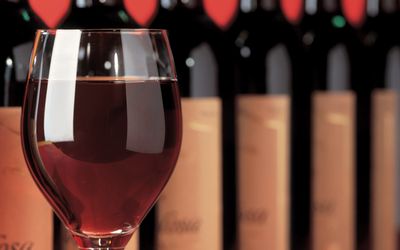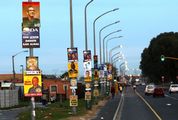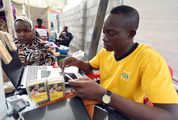LIQUID INVESTMENTS: Vineyard virus denialism compromises proactive estates’ efforts
THE problem of vineyard virus has been a recurring theme among serious wine writers in SA — one that the critics and commentators have taken more seriously than many of the players more directly affected by the problem. This is partly because growers would like to wish it away, and probably believe that if they hear no evil and speak no evil, there will be no evil.
Those who care about wine quality refuse to be silent about it because the fruit from virus-infected vines is palpably impaired.
The virus most prevalent in SA is leaf-roll. Once it has infected a vine, it is there for life. If it is not in the original plant material; it is spread by mealy bugs or by pruning secateurs. Once it is in a vineyard, if it is not isolated and the plant removed, everything will finally be infected. Clearly, doing nothing about it is not a great strategy: it is a bit like ignoring your HIV and hoping it will not become AIDS.
The propensity to suppress the subject dates back to the era when the KWV controlled the supply of plant material. Clearly, the producer organisation was deeply implicated (however unintentionally) in the dissemination of virus-infected vines. Neither it, nor its cronies in the Old SA, were in a hurry to pick up the tab for the product liability claims that would flow like quicksilver if culpability could be established.
Today, however, much virus-free material is available, so establishing a clean vineyard is hardly a challenge: the problem is to maintain its three-star phyto-sanitary status.
For most of this century, Vergelegen in Somerset West has been working with Dr Gerhard Pietersen from the University of Pretoria on a project aimed at achieving exactly this.
The operation runs on a combination of unbroken cold-chain logistics, coupled with the rigorous application of quarantine procedures. Ensure you begin with virus-free material and that the scion is grafted onto virus-free rootstock. Then plant on land that has been prepared properly to ensure there is no residue from old infected vines. Then check all the vines annually. As and when virus appears, remove and replace the vine — and mark all the adjacent plants and monitor them — they are at greatest risk.
This is an expensive and painstaking operation (there are more than 100,000 red fruit vines at Vergelegen), but the results have been extraordinary.
The oldest virus-free blocks are 18 years old and the estate is virtually free of its own endemic virus. Its greatest risks are from neighbouring farms — to the extent that they are being less methodical in their approach. There is an inexorability to the process.
Several other properties have adopted this — or a similar approach. Tokara and Thelema have been equally meticulous in weeding out infected material, while Johann Rupert has overseen a full replanting exercise at Anthonij Rupert Wines/L’Ormarins, and the same protocols now govern the management of the vines. However, if you add up the full extent of the country’s vineyards subject to this programme, it would come to less than 1% of the national plantings. As long as everyone else is ignoring the problem, the propensity for virus to spread remains unacceptably high.
Gerhard Pietersen has been managing a similar programme for the 30 or so grape growers of Hawke’s Bay’s Gimlett Gravels — one of New Zealand’s most important viticultural sites. Their unanimity has ensured the virtual elimination of the problem in little more than a decade.
South African producers lack the inclination, and in many cases, the means to adopt the same approach. Instead, they act like motorists who do not maintain their vehicles, and are saddened and surprised when they finish up on the scrapheap.

Picture: THINKSTOCK
THE problem of vineyard virus has been a recurring theme among serious wine writers in SA — one that the critics and commentators have taken more seriously than many of the players more directly affected by the problem. This is partly because growers would like to wish it away, and probably believe that if they hear no evil and speak no evil, there will be no evil.
Those who care about wine quality refuse to be silent about it because the fruit from virus-infected vines is palpably impaired.
The virus most prevalent in SA is leaf-roll. Once it has infected a vine, it is there for life. If it is not in the original plant material; it is spread by mealy bugs or by pruning secateurs. Once it is in a vineyard, if it is not isolated and the plant removed, everything will finally be infected. Clearly, doing nothing about it is not a great strategy: it is a bit like ignoring your HIV and hoping it will not become AIDS.
The propensity to suppress the subject dates back to the era when the KWV controlled the supply of plant material. Clearly, the producer organisation was deeply implicated (however unintentionally) in the dissemination of virus-infected vines. Neither it, nor its cronies in the Old SA, were in a hurry to pick up the tab for the product liability claims that would flow like quicksilver if culpability could be established.
Today, however, much virus-free material is available, so establishing a clean vineyard is hardly a challenge: the problem is to maintain its three-star phyto-sanitary status.
For most of this century, Vergelegen in Somerset West has been working with Dr Gerhard Pietersen from the University of Pretoria on a project aimed at achieving exactly this.
The operation runs on a combination of unbroken cold-chain logistics, coupled with the rigorous application of quarantine procedures. Ensure you begin with virus-free material and that the scion is grafted onto virus-free rootstock. Then plant on land that has been prepared properly to ensure there is no residue from old infected vines. Then check all the vines annually. As and when virus appears, remove and replace the vine — and mark all the adjacent plants and monitor them — they are at greatest risk.
This is an expensive and painstaking operation (there are more than 100,000 red fruit vines at Vergelegen), but the results have been extraordinary.
The oldest virus-free blocks are 18 years old and the estate is virtually free of its own endemic virus. Its greatest risks are from neighbouring farms — to the extent that they are being less methodical in their approach. There is an inexorability to the process.
Several other properties have adopted this — or a similar approach. Tokara and Thelema have been equally meticulous in weeding out infected material, while Johann Rupert has overseen a full replanting exercise at Anthonij Rupert Wines/L’Ormarins, and the same protocols now govern the management of the vines. However, if you add up the full extent of the country’s vineyards subject to this programme, it would come to less than 1% of the national plantings. As long as everyone else is ignoring the problem, the propensity for virus to spread remains unacceptably high.
Gerhard Pietersen has been managing a similar programme for the 30 or so grape growers of Hawke’s Bay’s Gimlett Gravels — one of New Zealand’s most important viticultural sites. Their unanimity has ensured the virtual elimination of the problem in little more than a decade.
South African producers lack the inclination, and in many cases, the means to adopt the same approach. Instead, they act like motorists who do not maintain their vehicles, and are saddened and surprised when they finish up on the scrapheap.



















